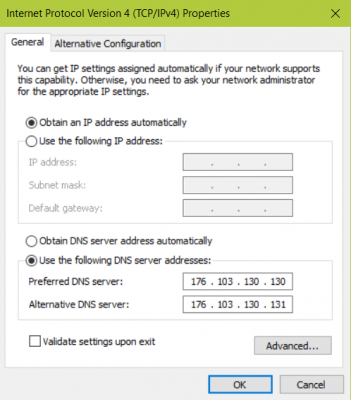
 Point your router’s DNS server to your AdGuard Home server IP address. Now that the setup of AdGuard Home is complete, we need to determine a way to point our clients to our DNS server. DNS Configuration – How to Install AdGuard Home on a Raspberry Pi There are plenty of options that you can play around with but these are some of the most important ones right after installation. Filters – DNS Allowlists: Define domains that should not be blocked.
Point your router’s DNS server to your AdGuard Home server IP address. Now that the setup of AdGuard Home is complete, we need to determine a way to point our clients to our DNS server. DNS Configuration – How to Install AdGuard Home on a Raspberry Pi There are plenty of options that you can play around with but these are some of the most important ones right after installation. Filters – DNS Allowlists: Define domains that should not be blocked. 
Filters – Blocked Service: Quickly block an entire service.Filters – DNS Blocklists: This is where you can add new blocklists (if you’d like to add any).Settings – General Settings: The majority of settings are somewhat self-explanatory on this page but this is where you can configure logging and query retention.

The AdGuard team has a pretty good tutorial here that will show you how to configure it if you’re interested.
Settings – Encryption Settings: This is where you will configure your certificate if you’d like to enable DNS-over-HTTPS. If you don’t configure a certificate, you will not get the benefits of DNS-over-HTTPS. By default, the upstream DNS server will be listed as quad9 which is encrypted DNS-over-HTTPS. Settings – DNS Settings: These are your upstream DNS servers. I’m not going to go into specifics as far as settings go because they’re mostly personal preference, but here are a few things you might want to check right after installation: After the setup process is complete, you will be able to access to management portal using the IP address only (as it uses port 80). Please note that you will no longer use port 3000 when navigating to the web portal. AdGuard Home is now set up and installed. If you aren’t interested in doing that, this is a great section to learn how to set up the DNS server on your local device.Ĩ. In the next section, I will go over my preferred approach which is setting AdGuard Home to be my router’s DNS server. The next screen will show you how to configure different devices. You will now see that the static IP address section has changed.ħ. You will receive a message that AdGuard Home will configure your IP address to be the Raspberry Pi’s static IP address. If you didn’t assign your Raspberry Pi a static IP address from your router, select Set a static IP address. Change the listen interface to the IP address of your Raspberry Pi.ĥ. Select Get Started to start the configuration process.Ĥ. That’s it! Access AdGuard Home using the IP address of your Raspberry Pi and port 3000. The install file is found on the official AdGuard Home github page. These commands will get the latest version of AdGuard Home, extract the archive and silently install it. How to Install AdGuard Home on a Raspberry Piġ. Conclusion – How to Install AdGuard Home on a Raspberry Pi. 
DNS Configuration – How to Install AdGuard Home on a Raspberry Pi. How to Install AdGuard Home on a Raspberry Pi.








 0 kommentar(er)
0 kommentar(er)
